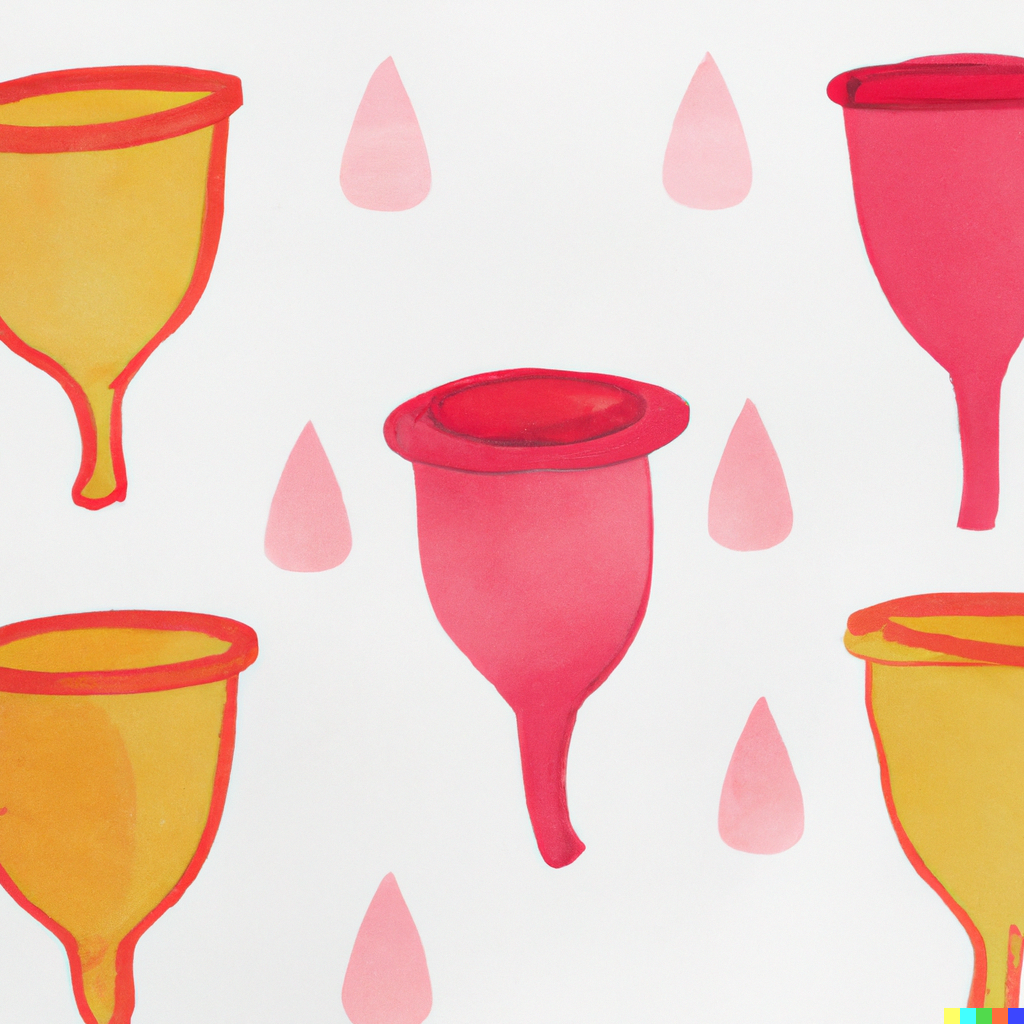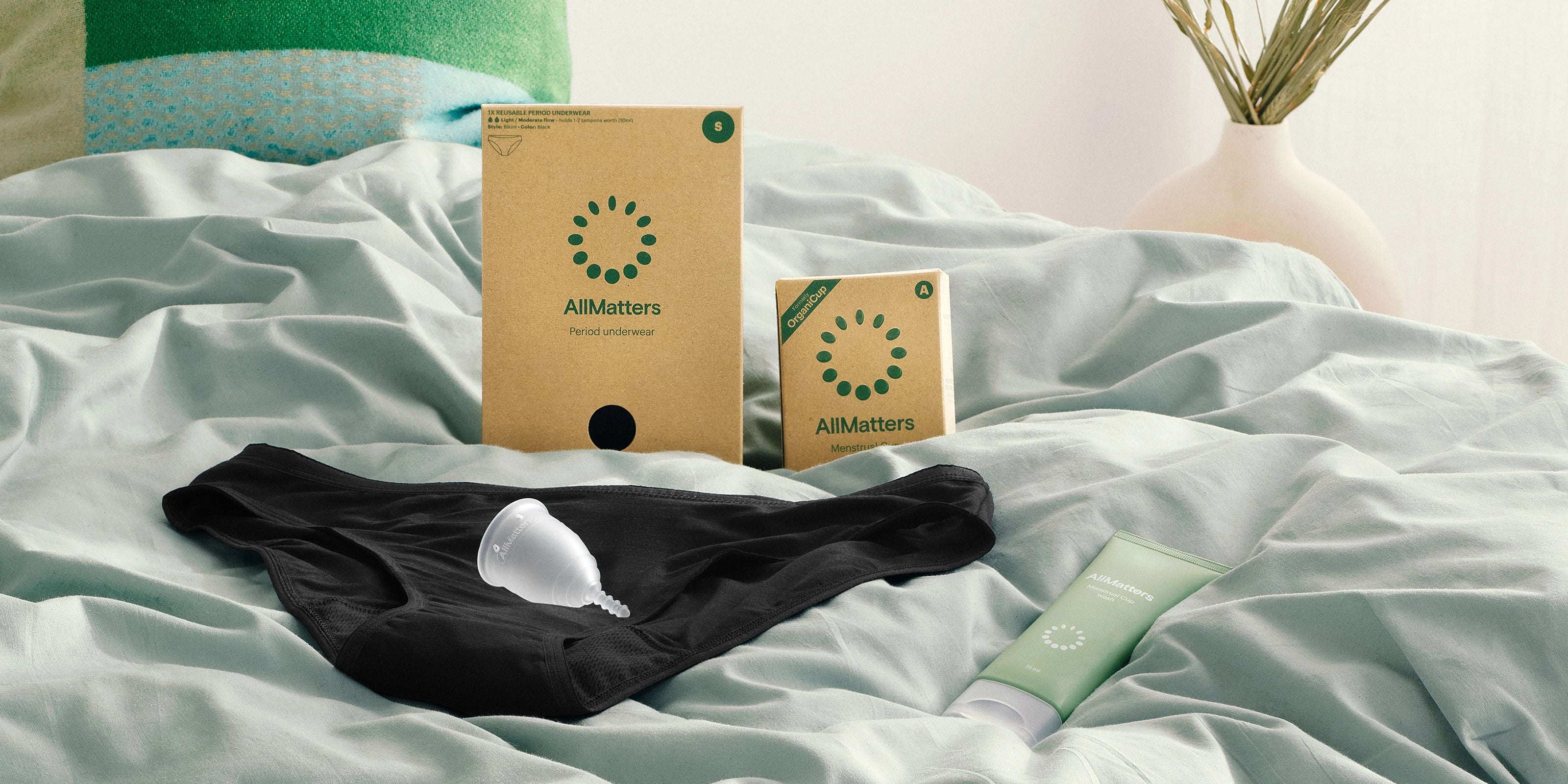It’s normal to wonder if there are potential risks when using a new product, especially one that goes inside you. Like any period product, there is a minimal risk, most of which can be avoided when you meet the basic care and sanitisation requirements needed for your menstrual cup.
There are quite a few myths and outright misinformation about menstrual cups (and anatomy in general), and this is why it’s important to know your anatomy and how your reproductive organs work. There’s no shame in having questions, and the goal is to understand our bodies better and make an informed choice about the products we use.

The cervix is located in the lower part of the uterus, and it acts as a gate between the vagina and the uterus, connecting them together. It helps keep your uterine cavity sterile from bacteria. There are two parts to the uterus: the endocervical canal which is connected to the uterus, and the ectocervix which is the portion of the cervix that protrudes into the vaginal canal.
Because our bodies are all different, some have a higher cervix than others – in fact, your cervix regularly moves and will become higher or lower depending on where you are in your cycle. Where your cervix is located will affect a lot of things, including what size of cup you need, and how far up you need to place it.
So, can a menstrual cup damage your cervix?
Even though there have been rumors about it, there is currently no known evidence of menstrual cups damaging your cervix. If your cup is the right size and in the right place, there should be no issues of pain or problems with your cup getting stuck to your cervix.
The cervix is located in the lower part of the uterus, and it acts as a gate between the vagina and the uterus, connecting them together. It helps keep your uterine cavity sterile from bacteria. There are two parts to the uterus: the endocervical canal which is connected to the uterus, and the ectocervix which is the portion of the cervix that protrudes into the vaginal canal.
Because our bodies are all different, some have a higher cervix than others – in fact, your cervix regularly moves and will become higher or lower depending on where you are in your cycle. Where your cervix is located will affect a lot of things, including what size of cup you need, and how far up you need to place it.
So, can a menstrual cup damage your cervix?
Even though there have been rumors about it, there is currently no known evidence of menstrual cups damaging your cervix. If your cup is the right size and in the right place, there should be no issues of pain or problems with your cup getting stuck to your cervix.


Just like with your cervix, there is no evidence linking menstrual cups to uterine prolapse. The only things that really cause organ prolapse is repeated prolonged bearing down - from things like chronic constipation, chronic respiratory issues, or childbirth. When you are constantly forcing your muscles to push, over time this can cause the muscles in your pelvic floor to weaken. This is what ends up causing a prolapse: your menstrual cup will not.
What if I have pain when using my menstrual cup?
There should be NO pain when you insert or wear a menstrual cup, but here could be a few reasons of why you’re having pain:
You need to relax: whether you’re nervous, stressed, or not in a position that works for you, when pelvic floor muscles are tightened, they aren’t very flexible and this could cause pain. Switching to a different position, taking some deep breaths, and taking a break could all help.
You need a different size: if your cup is ill-fitting and is too big, it could be pressing too much on the cervix or vaginal walls causing it to be uncomfortable or painful. Likewise, if you buy a cup that is too small, it can ‘walk up’ your vagina and irritate the cervix. Trying out different sizes can make sure you are using the best option for you.
You need to break the seal: most menstrual cups have a stem at the end of the base, including ours. But you shouldn't be pulling on the stem without breaking the seal first. Pinching the base should be enough to break the seal, and then you can pull out your cup with ease.
Just like with your cervix, there is no evidence linking menstrual cups to uterine prolapse. The only things that really cause organ prolapse is repeated prolonged bearing down - from things like chronic constipation, chronic respiratory issues, or childbirth. When you are constantly forcing your muscles to push, over time this can cause the muscles in your pelvic floor to weaken. This is what ends up causing a prolapse: your menstrual cup will not.
What if I have pain when using my menstrual cup?
There should be NO pain when you insert or wear a menstrual cup, but here could be a few reasons of why you’re having pain:
You need to relax: whether you’re nervous, stressed, or not in a position that works for you, when pelvic floor muscles are tightened, they aren’t very flexible and this could cause pain. Switching to a different position, taking some deep breaths, and taking a break could all help.
You need a different size: if your cup is ill-fitting and is too big, it could be pressing too much on the cervix or vaginal walls causing it to be uncomfortable or painful. Likewise, if you buy a cup that is too small, it can ‘walk up’ your vagina and irritate the cervix. Trying out different sizes can make sure you are using the best option for you.
You need to break the seal: most menstrual cups have a stem at the end of the base, including ours. But you shouldn't be pulling on the stem without breaking the seal first. Pinching the base should be enough to break the seal, and then you can pull out your cup with ease.


The first thing is to breathe, and it will come out! Panicking will only cause you to tense up and make it harder to remove your cup. Giving the base a good squeeze should have the cup come out with ease, but if it’s not coming loose, try pressing against the rim of the cup to break the seal manually.
If you can’t reach your cup, don’t worry! You’ll need to bear down by using your pelvic floor muscles to push it down. Once it’s in reach, you should be able to break the seal.
For an easier removal for next time around, you can also make sure that the air holes in the cup are not blocked by debris and give them a good clean. Another way is to make sure you’re correctly inserting your cup.
The first thing is to breathe, and it will come out! Panicking will only cause you to tense up and make it harder to remove your cup. Giving the base a good squeeze should have the cup come out with ease, but if it’s not coming loose, try pressing against the rim of the cup to break the seal manually.
If you can’t reach your cup, don’t worry! You’ll need to bear down by using your pelvic floor muscles to push it down. Once it’s in reach, you should be able to break the seal.
For an easier removal for next time around, you can also make sure that the air holes in the cup are not blocked by debris and give them a good clean. Another way is to make sure you’re correctly inserting your cup.


There are potential risks with any period product you use, and it can sound scary, but you’re more likely to experience mild irritation than develop a rare complication like toxic shock syndrome or TSS.
Understanding why and how these complications can occur can help you reduce the risk of them happening.
Irritation: irritation can be caused by loads of different things, from not washing your hands, or properly sanitizing your cup, to inserting a cup without proper lubrication. It can also be caused if the cup is not the right size or if the cup rubs against your urethra on the way out.
Infection: infection from a menstrual cup is extremely rare, and even then, the bacteria on the hands or on the cup is more likely to cause infection than the cup itself. Making sure you are washing your hands and cup properly between changes, and sanitizing the cup properly, will help.
TSS: Toxic shock syndrome is rare but a serious complication that comes from specific bacteria. You may know of TSS from the association of leaving a tampon in longer than recommended. It’s rare when using a tampon, and the good news is it is even more rare when using a menstrual cup. You can reduce your risk in the same way by washing your hands and cup, and sanitising your cup regularly, using fragrance free, oil free soap.
There are potential risks with any period product you use, and it can sound scary, but you’re more likely to experience mild irritation than develop a rare complication like toxic shock syndrome or TSS.
Understanding why and how these complications can occur can help you reduce the risk of them happening.
Irritation: irritation can be caused by loads of different things, from not washing your hands, or properly sanitizing your cup, to inserting a cup without proper lubrication. It can also be caused if the cup is not the right size or if the cup rubs against your urethra on the way out.
Infection: infection from a menstrual cup is extremely rare, and even then, the bacteria on the hands or on the cup is more likely to cause infection than the cup itself. Making sure you are washing your hands and cup properly between changes, and sanitizing the cup properly, will help.
TSS: Toxic shock syndrome is rare but a serious complication that comes from specific bacteria. You may know of TSS from the association of leaving a tampon in longer than recommended. It’s rare when using a tampon, and the good news is it is even more rare when using a menstrual cup. You can reduce your risk in the same way by washing your hands and cup, and sanitising your cup regularly, using fragrance free, oil free soap.


Anyone can use a menstrual cup, but if you have any concerns you can always consult to a doctor before use.
Anyone can use a menstrual cup, but if you have any concerns you can always consult to a doctor before use.












